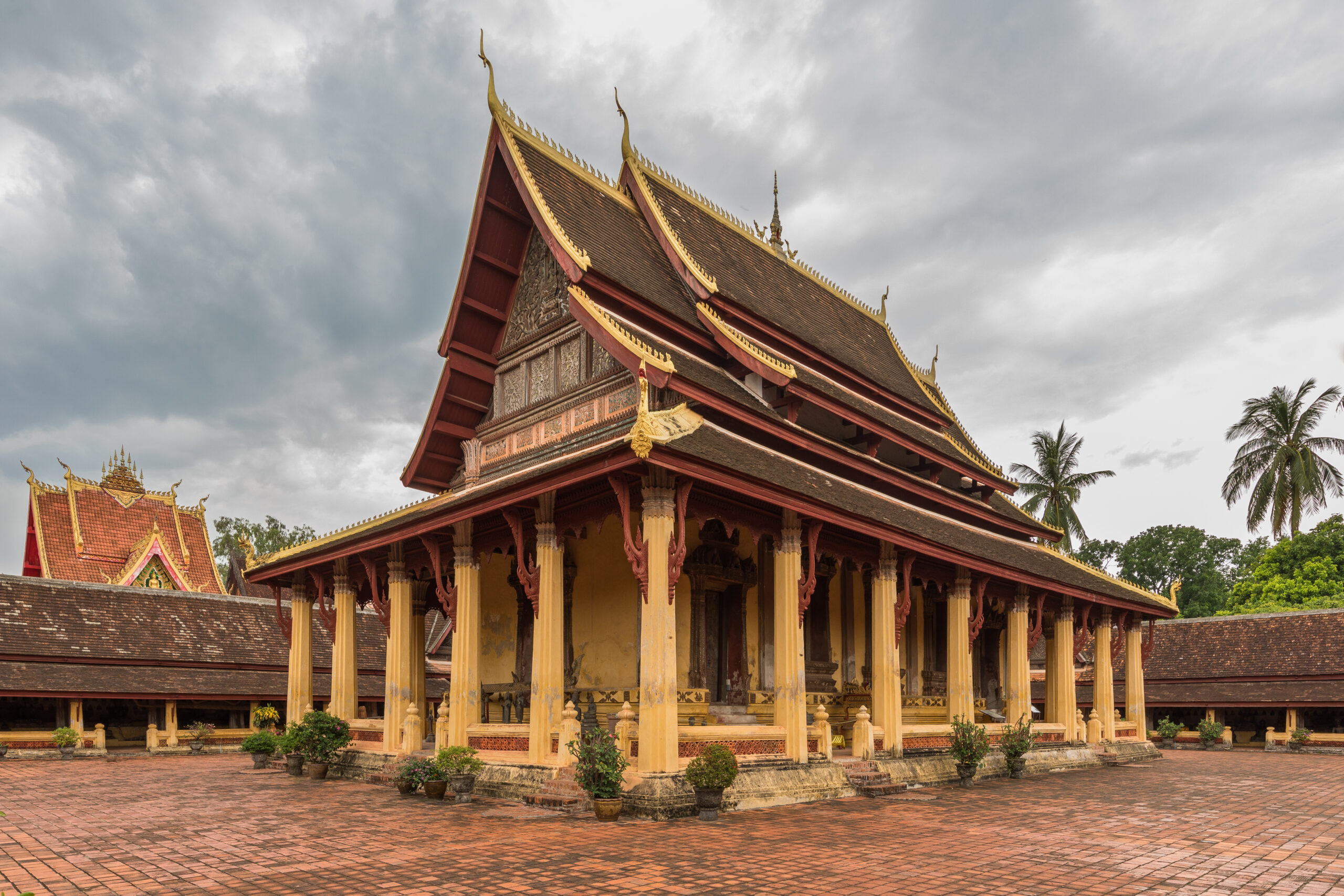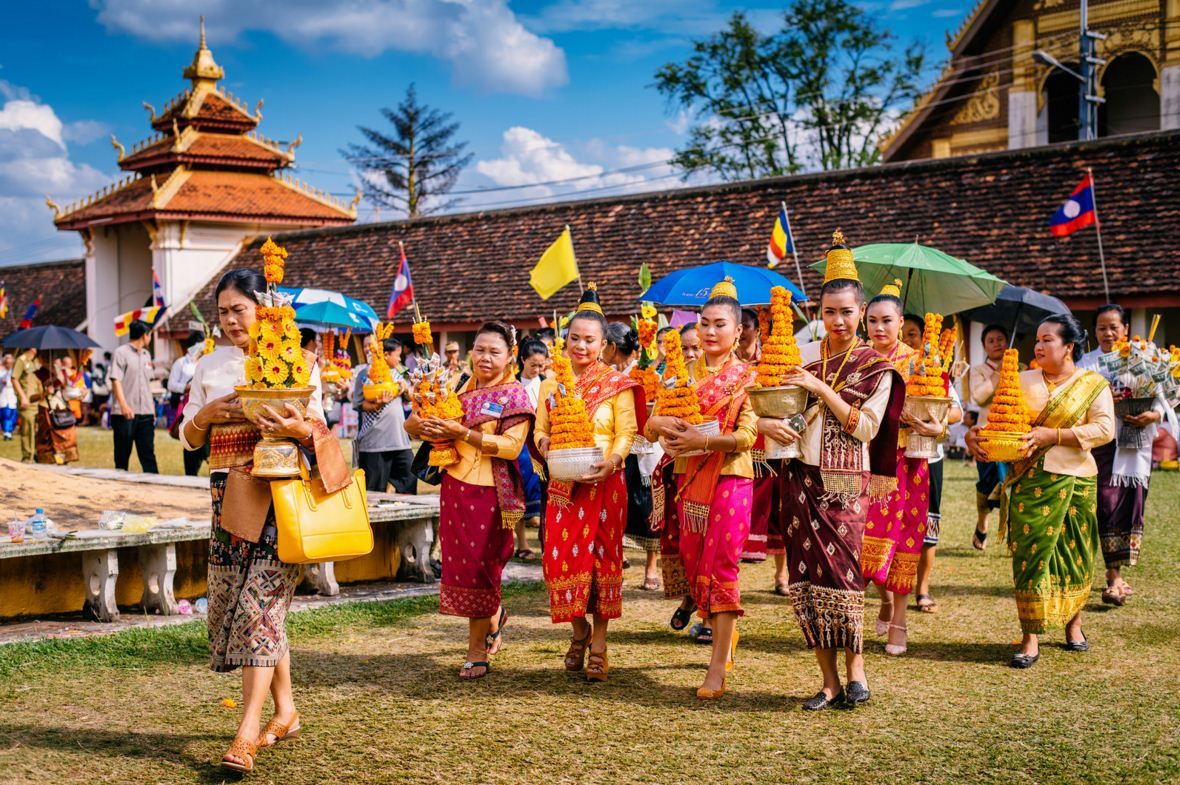1. Overview
The King Anouvong Statue is a significant monument located in Chao Anouvong Park along the Mekong River in Vientiane, Laos. It honors King Anouvong, the last monarch of the Kingdom of Vientiane, who led a notable rebellion against Siamese rule in the 19th century. The statue is an iconic landmark and serves as a symbol of Lao pride, resistance, and national identity.
Name: King Anouvong Statue
Location: Chao Anouvong Park, Quai Fa Ngum, Vientiane, Laos
Coordinates: 17.9640° N, 102.6085° E
Best visited: During sunset or as part of a walk along the Mekong Riverside Promenade.
2. History of the Place
The King Anouvong Statue is steeped in historical and national significance:
- Inauguration: The statue was unveiled in 2010 to celebrate the 450th anniversary of Vientiane.
- Historical Role: King Anouvong (1767–1829) led a revolt against Siamese rule in an effort to reclaim Lao sovereignty.
- Symbolism: The statue stands as a powerful symbol of resistance and patriotism in Laos.
- Pose: The king is depicted standing and pointing forward, symbolizing leadership and vision.
- Surroundings: Located in a well-maintained riverside park with gardens, walkways, and fountains.
- Cultural Relevance: The site is often used for cultural events and national celebrations.
- Tourist Spot: A key attraction for both local visitors and international tourists.
- Monument Base: Contains inscriptions about King Anouvong’s life and contributions.
- Renovations: The park and monument area are regularly maintained by city authorities.
- National Identity: Frequently used as a backdrop for photos, parades, and public gatherings.
3. Location
4. What Makes “King Anouvong Statue” Popular?
The King Anouvong Statue is beloved for its symbolism and location:
- Patriotic Symbol: Represents national resilience and the fight for independence.
- Photographic Landmark: A favorite for tourists and locals, especially during sunset.
- Riverside Setting: Located near the night market and promenade, it’s ideal for evening visits.
5. Overall Ratings (1 to 5 Stars)
The statue is rated highly for its cultural significance and location:
Overall Rating: ⭐⭐⭐⭐⭐ (5/5)
Cultural Significance: ⭐⭐⭐⭐⭐ (5/5)
Authenticity: ⭐⭐⭐⭐⭐ (5/5)
Atmosphere & Environment: ⭐⭐⭐⭐☆ (4/5)
Accessibility: ⭐⭐⭐⭐⭐ (5/5)
Tourist Friendliness: ⭐⭐⭐⭐⭐ (5/5)
6. Weather
Vientiane’s tropical climate makes for warm visits year-round:
Best Time to Visit: November to February (cooler, dry season)
Temperature Range: 25–35°C (77–95°F)
Wet Season: May to October
Rain Gear: Recommended for rainy evenings
7. Nearest Five Hotels
Here are five nearby accommodations:
- Salana Boutique Hotel: Just steps away, elegant and modern.
- Lao Orchid Hotel: Riverside hotel with excellent views.
- Dhavara Boutique Hotel: Colonial charm with modern amenities.
- Ibis Vientiane Nam Phu: Great value and central location.
- City Inn Vientiane: Affordable, clean, and walkable to the park.
8. Timings
The statue is in a public park, open to visitors all day:
Opening Hours: Open 24 hours
Best Time to Visit: Around sunset (5:30 PM – 6:30 PM) for stunning views and photos.
9. Time Required to Visit
A visit to the statue is usually brief but meaningful:
Visit Duration: 15–30 minutes
Ideal for: Quick historical reflection or part of an evening walk
10. Entry Fees & Ticket Booking Details
There are no fees or bookings required:
Entry Fee: Free
Booking: Not required
11. Things to See & Do
Enjoy the statue and nearby park offerings:
- View: Admire the statue and surrounding gardens
- Relax: Sit on benches along the river
- Walk: Continue on to the night market or riverside promenade
12. Best Time to Visit
The dry season offers the most pleasant weather for visiting:
Best Time: November to February
Time of Day: Early evening (sunset)
13. Nearest Parking Spots
Several nearby options for visitors arriving by vehicle:
Street Parking: Along Fa Ngum Road
Public Parking: Near Chao Anouvong Park entrance
Alternative: Use a tuk-tuk or bike for ease
14. Tips for Visitors
- Arrive at Sunset: The lighting and colors are beautiful at this time.
- Read Inscriptions: Take time to understand King Anouvong’s story.
- Be Respectful: This is a national monument with deep cultural meaning.
- Carry Water: Especially if walking around the park during the day.
15. How to Reach the Place
The statue is located centrally and easily accessible:
By Tuk-Tuk: Ask for Chao Anouvong Park
By Foot: Walkable from most downtown hotels
By Bicycle: A fun and efficient option
Taxi: Available from any part of the city
16. Nearby Attractions to Combine for the Visit
Pair your visit with these nearby places:
- Chao Anouvong Park: For exercise and riverside views
- Vientiane Night Market: For shopping and food
- Mekong Riverside Promenade: Scenic walking path
- Wat Chanthaboury: Temple nearby
- Nam Phou Fountain: City square with local cafes



